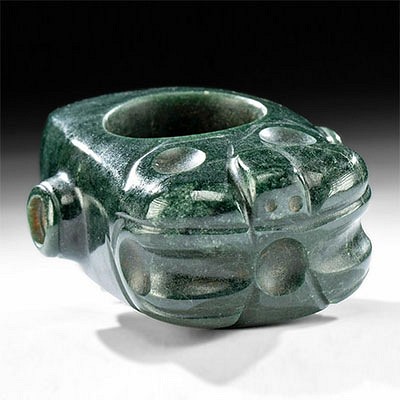Fine South Arabian Qatabanian Stone Head
Lot 58
About Seller
Artemis Fine Arts
686 S Taylor Ave, Ste 106
Louisville, CO 80027
United States
Selling antiquities, ancient and ethnographic art online since 1993, Artemis Gallery specializes in Classical Antiquities (Egyptian, Greek, Roman, Near Eastern), Asian, Pre-Columbian, African / Tribal / Oceanographic art. Our extensive inventory includes pottery, stone, metal, wood, glass and textil...Read more
Categories
Estimate:
$1,800 - $2,500
Absentee vs Live bid
Two ways to bid:
- Leave a max absentee bid and the platform will bid on your behalf up to your maximum bid during the live auction.
- Bid live during the auction and your bids will be submitted real-time to the auctioneer.
Bid Increments
| Price | Bid Increment |
|---|---|
| $0 | $25 |
| $300 | $50 |
| $1,000 | $100 |
| $2,000 | $250 |
| $5,000 | $500 |
| $10,000 | $1,000 |
| $20,000 | $2,500 |
| $50,000 | $5,000 |
| $100,000 | $10,000 |
| $200,000 | $20,000 |
About Auction
By Artemis Fine Arts
Sep 10, 2020
Set Reminder
2020-09-10 10:00:00
2020-09-10 10:00:00
America/New_York
Bidsquare
Bidsquare : Antiquities | Asian | Ethnographic Art
https://www.bidsquare.com/auctions/artemis-gallery/antiquities-asian-ethnographic-art-5546
Featuring classical antiquities, ancient and ethnographic art from cultures encompassing the globe. Egyptian, Greek, Roman, Etruscan, Near Eastern, Asian, Pre-Columbian, Native American, African / Tribal, Oceanic, Spanish Colonial, Russian, Fossils, Fine Art, more! Artemis Fine Arts info@artemisgallery.com
Featuring classical antiquities, ancient and ethnographic art from cultures encompassing the globe. Egyptian, Greek, Roman, Etruscan, Near Eastern, Asian, Pre-Columbian, Native American, African / Tribal, Oceanic, Spanish Colonial, Russian, Fossils, Fine Art, more! Artemis Fine Arts info@artemisgallery.com
- Lot Description
Ancient Middle East, South Arabia, Qatabanian culture, ca. 3rd century BCE. A beautiful example of a head from a funerary stela that is hand-carved from gray hardstone, perhaps schist, with a band of red running across the top. The head presents large ovoid eyes with impressed pupils on either side of the narrow nose, pursed lips set above a smooth chin, slightly bulging cheeks in front of a tapered mandible, and a shallow indentation centered on the forehead. Faces like this were typically presented on funerary plaques with the name of the deceased inscribed in the Qatabanian language. Size: 5.375" W x 7.9" H (13.7 cm x 20.1 cm); 10.625" H (27 cm) on included custom stand.
Funerary stelae with faces like this example have been found in three areas, one of which was the cemetery at Tamna, the capital city of Qataban. The Kingdom of Qataban rose to prominence in the second half of the 1st millennium BCE, because it controlled the trade in frankincense and myrrh, incenses required to be burned at altars during religious rituals further north and west. A haunting and intriguing object, certain to spark conversation, as well as a reminder of the deeper history of the Middle East.
Provenance: private East Coast, USA collection, acquired prior to 2008; ex-Neil Phillips collection, New York, USA, acquired in the 1980s
All items legal to buy/sell under U.S. Statute covering cultural patrimony Code 2600, CHAPTER 14, and are guaranteed to be as described or your money back.
A Certificate of Authenticity will accompany all winning bids.
We ship worldwide and handle all shipping in-house for your convenience.
#157503A fragment of a larger funerary plaque. Chips and losses to areas of neckline, nose, peripheries, and verso as shown. Abrasions and light softening to some facial details and light encrustations. Great smooth surfaces throughout. Drilled through bottom of neck for display purposes.Condition
- Shipping Info
-
All shipping is handled in-house for your convenience. Your invoice from Artemis Gallery will include shipping calculation instructions. If in doubt, please inquire BEFORE bidding for estimated shipping costs for individual items.
-
- Buyer's Premium



 EUR
EUR CAD
CAD AUD
AUD GBP
GBP MXN
MXN HKD
HKD CNY
CNY MYR
MYR SEK
SEK SGD
SGD CHF
CHF THB
THB














